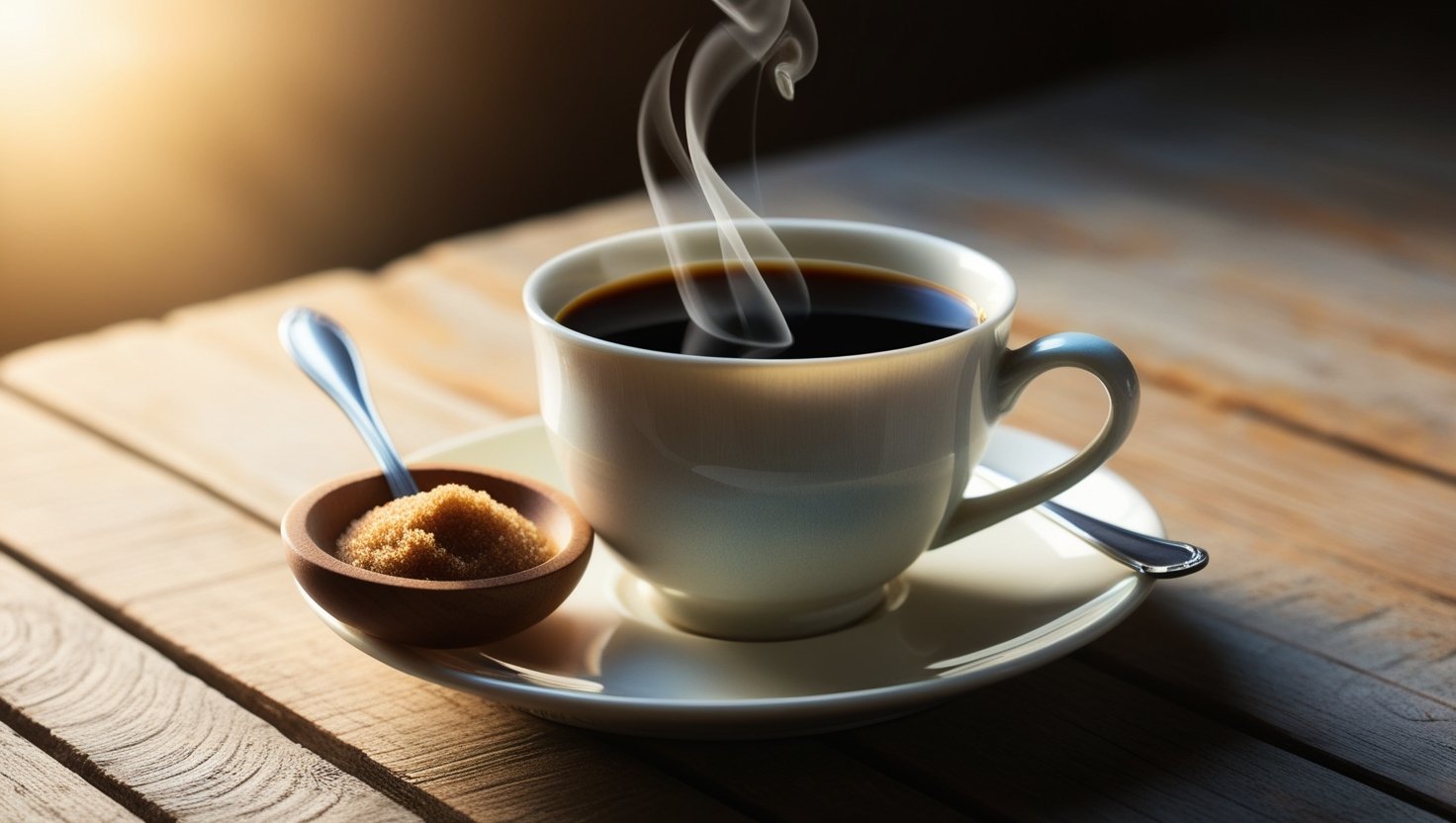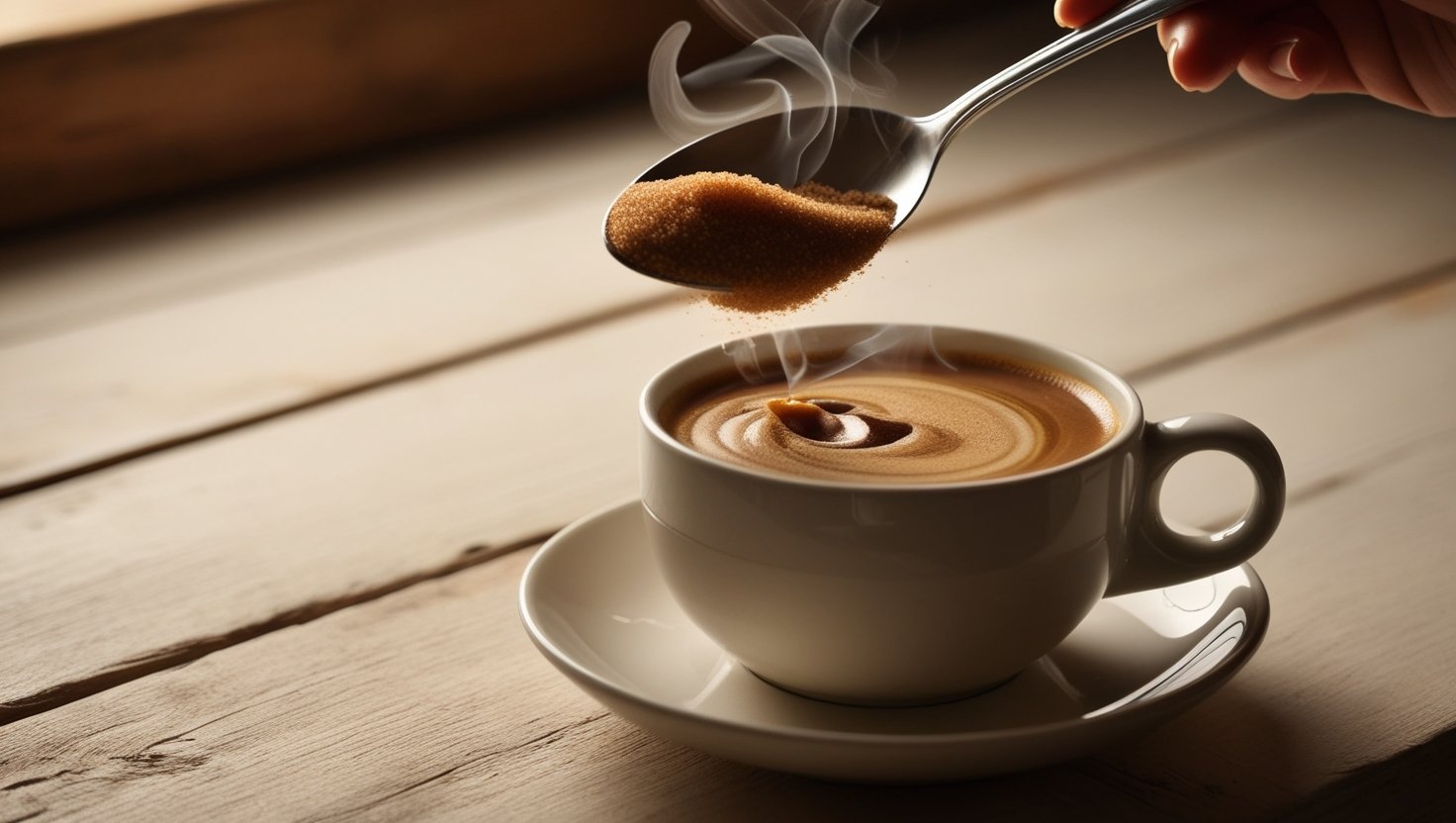Can You Put Brown Sugar in Coffee?
A Sweet Twist on Tradition

☕ The Morning That Changed Everything
Janine had been drinking the same black coffee every day for nearly a decade. She liked it bitter, unflavored, and no-nonsense. One morning, while out of white sugar, her roommate offered a teaspoon of brown sugar instead. “Why not,” Janine shrugged — and poured. One sip later, everything changed. The depth, the molasses, the unexpected warmth — it wasn’t just coffee anymore; it was a treat. That one swap flipped her coffee ritual on its head.
So, can you put brown sugar in coffee? Not only can you — you should consider it.
✅ Short Answer: Yes, You Absolutely Can
Adding brown sugar to coffee is perfectly safe, tasty, and common. It adds a deeper sweetness compared to white sugar, with notes of caramel, toffee, and molasses that can enhance certain coffee roasts — especially darker ones.
🧂 Brown Sugar vs. White Sugar in Coffee
Let’s compare them side-by-side:
| Factor | Brown Sugar | White Sugar |
|---|---|---|
| Taste | Rich, caramel, earthy | Pure sweetness |
| Composition | Sucrose + molasses | Refined sucrose |
| Processing Level | Less refined | Highly refined |
| Pairs Best With | Dark roasts, espresso, lattes | Light to medium roasts |
Brown sugar is essentially white sugar with molasses either retained (in raw sugar) or added back in. The molasses gives it a deeper flavor and slightly more moisture.
📊 Stats: What’s the Difference Nutritionally?
According to the USDA:
-
1 tsp brown sugar = 17 calories
-
1 tsp white sugar = 16.3 calories
That’s practically identical. So if you’re switching to brown sugar for health reasons alone — it won’t make a big difference. But in flavor? That’s where it shines.
🔬 The Science of Sweetness
Both white and brown sugar are made primarily of sucrose, but brown sugar contains 3-7% molasses. This molasses contributes:
-
Trace minerals like iron, calcium, potassium
-
A slight acidity, which can play nicely with coffee’s natural bitterness
-
A rounder mouthfeel when stirred into hot liquids
☕ What Coffees Taste Best with Brown Sugar?
1. Espresso
Brown sugar tones down the bitterness and adds depth to those bold shots.
2. Cold Brew
The mellow nature of cold brew pairs incredibly well with molasses sweetness.
3. French Press Coffee
Thick and oily, French press benefits from the earthy lift brown sugar provides.
4. Dark Roasts
Brown sugar echoes the smoky, rich flavors already present.
❌ When It Might Not Work
-
Light Roast Pour-Overs: These coffees highlight fruity, floral notes that molasses can overpower.
-
Flavored Creamers: Brown sugar + vanilla hazelnut pumpkin spice? Might be a bit much.
-
Iced Lattes (without melting): Brown sugar dissolves slower in cold liquids unless pre-syruped.
🧪 DIY: Make a Brown Sugar Syrup
Want an easy way to use brown sugar in both hot and iced coffee?
Brown Sugar Syrup Recipe:
-
1 cup brown sugar
-
1 cup water
-
(Optional: pinch of salt or cinnamon)
-
Combine in a saucepan over medium heat
-
Stir until dissolved
-
Cool and store in airtight jar (lasts ~2 weeks refrigerated)
Use it like a coffeehouse pro!
🌍 Cultural Uses of Brown Sugar in Coffee
Across the world, brown sugar isn’t just an alternative — it’s the norm:
-
Cuban Coffee (Café Cubano): Espresso whipped with demerara (a type of brown sugar) into a foamy crema.
-
Vietnamese Iced Coffee: While typically made with sweetened condensed milk, some regions also add brown sugar syrup.
-
Thai Coffee: Frequently brewed strong and sweetened with both brown sugar and sweetened milk.
🔥 How Baristas Use It
Modern cafés increasingly use brown sugar in espresso drinks, especially iced shaken coffees. You’ve probably seen Starbucks’ “Iced Brown Sugar Oatmilk Shaken Espresso.” It’s trendy — and delicious — for a reason.
Baristas love brown sugar because:
-
It blends well with alternative milks
-
It gives a toasty depth
-
It works well in syrup form for consistency
🛠️ How to Use Brown Sugar in Coffee at Home
1. Straight Into the Mug (Hot Coffee)
-
Stir 1-2 teaspoons directly into hot brew
-
Let sit 15 seconds, then stir again for full dissolve
2. Make It Into Syrup
-
Ideal for iced drinks
-
Dissolves evenly every time
3. Brown Sugar Cubes
-
Aesthetic + convenient
-
Easy portion control
4. In Coffee Baking Recipes
Use brown sugar in:
-
Coffee cake
-
Coffee-flavored muffins
-
Tiramisu
-
Syrups or glazes for espresso desserts
☕ Coffea Alchemy’s Take
At Coffea Alchemy, we encourage experimenting with sugar types, milk alternatives, brewing methods — all of it. Brown sugar is an underrated yet powerful addition to your coffee ritual. Whether you’re camping, pulling espresso shots, or just pouring drip in your kitchen, give it a try and see how your taste buds react.
⚠️ Common Questions
Q: Can I use light or dark brown sugar?
A: Yes. Dark brown sugar has more molasses and a stronger flavor; light brown is subtler.
Q: Will it change my coffee color?
A: Slightly, yes. You might see a darker, more golden hue — especially in lighter brews.
Q: Does it affect foam or crema?
A: In espresso drinks, sugar affects crema minimally — but in large quantities, it can thicken texture slightly.
🍯 Bonus: What About Other Natural Sweeteners?
| Sweetener | Notes |
|---|---|
| Honey | Floral, sweet, can overpower some roasts |
| Maple Syrup | Woodsy, best with strong dark blends |
| Agave Nectar | Light and smooth, neutral sweet |
| Coconut Sugar | Caramel-like, less refined |
Brown sugar holds a perfect middle ground between sweetness and complexity.
🧠 Final Thoughts
Trying brown sugar in your coffee might seem like a minor switch, but it opens the door to a more flavorful, layered experience. It’s not about replacing white sugar entirely — it’s about broadening your flavor palette, exploring depth, and seeing coffee not just as a drink, but as an experience.
So the next time you brew, will you reach for the brown sugar instead?
Related Post
Our newsletter
Subscribe to our weekly newsletter & keep up with our latest recipes and organized workshops. You can unsubscribe at any time.

